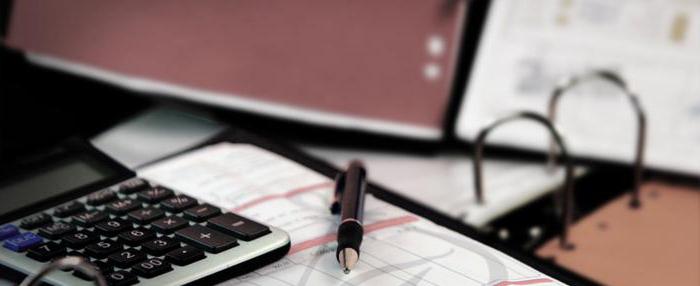Any business should be profitable and profitable to its owners. At times of expansion or increase in production capacity, management may decide to use additional borrowed capital.
The financial stability of the enterprise is an indicator that characterizes the independence of the company from external resources. It is used in the analysis of the self-sufficiency of a business, of how efficiently it can do without external funds.

For a comprehensive study, economists use various factors of stability of the enterprise. Only in this way can an objective comparison of the assets and liabilities of the balance sheet be made to find out how the company is able to satisfy the existing needs with its own capital.
Financial stability indicators are analyzed using their coefficients. Consider the most common of them.
Autonomy ratio
It is also called financial ratio independence. With its help, it is possible to see how much the company's own funds occupy in the structure of all available capital.

It is considered basic, which helps to establish how much equity available in the assets of the enterprise.
How to calculate the stability coefficient?
In order to find out the value of the autonomy coefficient, you need to use the following formula:
Ka = Ks / A,
Where:
- Ka is the coefficient of autonomy;
- Ks - equity (line of balance No. 1300);
- And - the assets of the company (balance line No. 1600).
It was established that this stability coefficient will be normal when its value is in the range of 0.5-0.7.
This means that equity should be 50-70% of the total assets. In this case, the stability coefficient will indicate that the company has a relatively good level of financial independence.
Coefficient of financial dependence
It helps to establish the share of borrowed funds in the total liabilities of the company. Such a stability coefficient is used in order to understand the level of dependence on borrowed capital, which is used as a financial source for carrying out economic activities.

It is calculated in the following way:
Kfz = O / P,
Where:
- Kfz - coefficient of financial dependence
- О - general obligations of the company (balance sheet lines No. 1400, 1500, 1530, net of debt to the founders, balance line No. 1540);
- P - liabilities (line of balance No. 1700).
Moreover, “O” should include: debt to owners, long-term and Short-term liabilities, income for the following periods, as well as reserves for future expenses.
The value of this coefficient will turn out to be normal when it fluctuates between 0.5-0.8. This means that the level of obligations should not exceed 50-80% of the total level of liabilities of the company.
If a different situation is observed, then it is worth revising the structure of resources due to which the economic activity of the enterprise is carried out.
Ratio showing the ratio of borrowed capital to equity
In order to obtain generalized information about the level of borrowed funds in equity, use this stability coefficient. The formula for the calculation is given below. It helps to understand how much attracted capital is per unit of own resources.
Such a stability coefficient can be calculated as follows:
KZs = KZ / Ks,
Where:
- KZs - coefficient showing the ratio of borrowed capital to own funds;
- KZ - borrowed capital (balance sheet lines No. 1500, 1400).
Typically, the values of this coefficient are compared in dynamics. The limit normal value is 0.7. All of the above indicates that the financial stability of the enterprise is not reliable, since there is a risk of default on its obligations to creditors on borrowed capital.
Maneuverability ratio of own working capital
If you need to know part of the working capital, which are equity, then this stability coefficient is used.
It can be calculated as follows:
Km = Oss / Ks,
Where:
- Km - maneuverability coefficient of own working capital;
- OSS - own working capital of the enterprise (from line of balance number 1300 you need to subtract page No. 1100).
Maneuverability is best analyzed in dynamics. Naturally, this ratio depends on the amount of borrowed capital. If the value is in the range of 0.2-0.5, then maneuverability is considered normal.
Deviations from the norm may indicate a too high level of borrowed funds or a sharp increase in the amount of equity.
Ratio showing the ratio of immobilized funds and mobile assets
Using this coefficient of financial stability, you can analyze the structure of capital. It shows how much working capital accounts for non-current assets.

For the calculation, use the following formula:
Km / u = Ao / Ano,
Where:
- Km / i - coefficient showing the ratio of immobilized funds and mobile assets;
- AO - current assets (balance line No. 1200);
- Avno - non-current assets (line of balance No. 1100).
Since this indicator does not have normative values, it is customary to conduct its analysis in dynamics. If the indicator decreases over time, then this means that the total amount of non-current assets has increased, and vice versa.
Security ratio working capital equity
This coefficient of financial stability clearly shows how much working capital can cover equity. For calculations it is worth using the following formula:
Kosz = (Ks - Avno) / Ao,
Where:
- Kosz - Ratio of working capital security with own funds.
If the value of this coefficient is more than 0.1, then it is considered that the company is provided with its own funds at the proper level. If the indicator is less, then it is worth thinking about reducing the number of borrowed funds in the general structure of working capital.

Indeed, otherwise, the risk of bankruptcy of the enterprise with the presence of outstanding debt to creditors increases.
What should be the value of the coefficient of financial stability?
Above were given various indicators and their ratios, thanks to which you can calculate the financial stability of the enterprise. When analyzing them, it is worth comparing the values with those that are considered valid.
It must be remembered that different industries are characterized by different values of indicators, which may be related to the specifics of their activities.
Therefore, before making any conclusions, it is necessary to conduct approximately the same analysis of other companies that are similar to the study and carry out their activities in the same industry.
Indicators need to be investigated in dynamics
Any calculated stability coefficient shows an incomplete picture if it is analyzed only by the current state. Yes, there are certain limits, being in which, the company does not enter into a risk zone.
But what to do when from year to year the numbers remain within the prescribed limits, but have different meanings?

Analysis of the dynamics of changes in such indicators will help to cope with this task.Due to this study, you can see the development trends of the company in terms of financial stability.
What does it look like? For example, take conditional figures for calculating the autonomy coefficient.
In our case, in 2014 it turned out at the level of 0.66. Assume that the same indicator in 2013 was 0.55. That is, during 2014, the autonomy coefficient increased by 0.11.
What conclusions can be drawn from such dynamics of this indicator? Given the fact that the autonomy indicator shows the share of equity in assets, we get a positive change in the balance sheet structure.
That is, the share of equity increased by 11%. This is possible if the company has less leverage or has its own funds, which have turned into equity.
This is a favorable phenomenon that increases the overall financial stability of the company. Such a situation may be the result of the adoption of the right management decisions by the management of the enterprise to change the structure of assets.

In the same way, you need to compare information from different periods and for other indicators. This will make it possible to understand in which direction the company is moving, whether it increases its financial stability and independence, or, conversely, accumulates the number of debt obligations that can lead to loss of solvency.
Any business should strive to be independent of external factors.
Conclusion
Despite the large number of ratios, their goal is the same - to show the level of financial independence of the company from external borrowed capital.
You can carry out a comprehensive analysis of the dependence of the enterprise on borrowed funds using the above indicators of financial stability. The ratios will help to assess the qualifications of management personnel in the issue of attracting, as well as the use of own and borrowed capital.
When carrying out such an analysis, it is necessary to take into account the industry factor. Depending on the sector of the economy in which the company conducts its business, the structure of assets, the ratio of current and non-current assets may differ, which, in turn, requires more or less of their coverage with borrowed funds.
